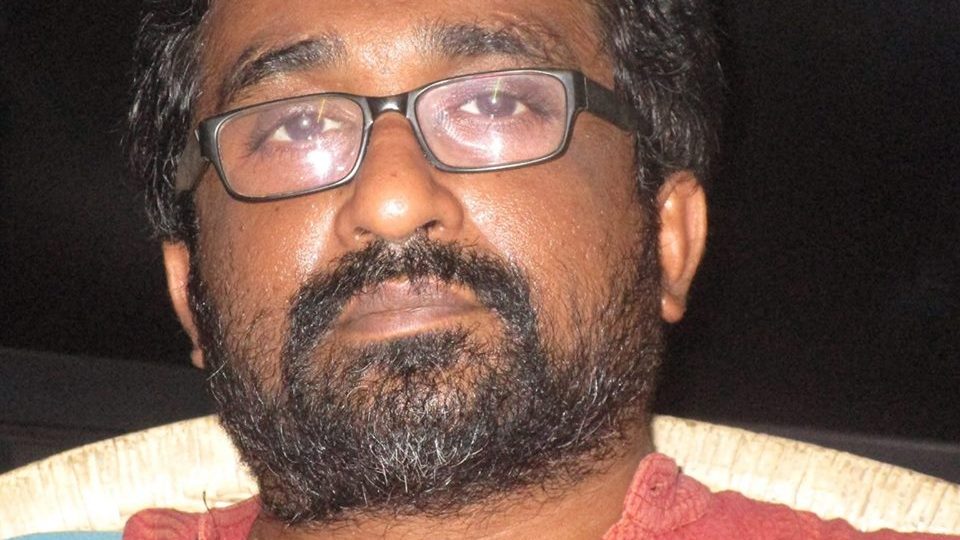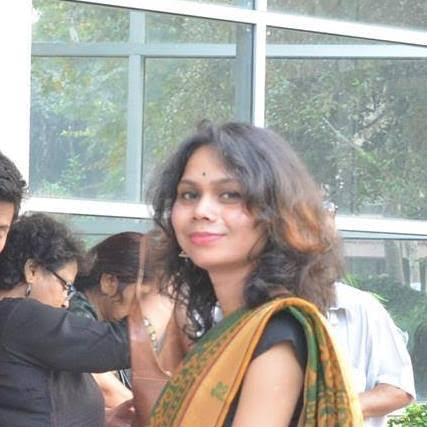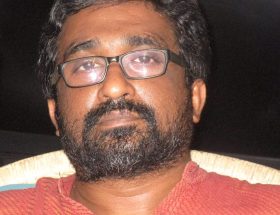Bobby Kunhu
 “The saints have never, according to my study, carried on a campaign against caste and untouchability. They were not concerned with the struggle between men. They were concerned with the relation between man and god. They did not preach that all men were equal. They preached that all men were equal in the eyes of god – a very different and a very innocuous proposition, which nobody can find difficult to preach or dangerous to believe in.”
“The saints have never, according to my study, carried on a campaign against caste and untouchability. They were not concerned with the struggle between men. They were concerned with the relation between man and god. They did not preach that all men were equal. They preached that all men were equal in the eyes of god – a very different and a very innocuous proposition, which nobody can find difficult to preach or dangerous to believe in.”
― Dr B R Ambedkar
On 26th January this year there was a news story in Manorama Online about how the bike and house of a Muslim youngster belonging to the fisher community was burned down. The story as reported broadly goes this way. Mohammed Aksar from the fishing community and Safala, perhaps from a Mappila family (more details aren’t forthcoming in the article) doing her MBBS, were in love. After three years of romance, the Safala’s family negotiated that their marriage could be solemnized after she finished her studies. In the meantime, her brother threatened Aksar and admitted Safala to a psychiatric institution. Aksar whisked Safala to an all women’s police station and with the direction of a magistrate; they solemnized their marriage under the Muslim personal law in a mosque – which Safala’s family stayed away from. The arson allegedly followed the Nikah and the couple are at present staying in a relative’s house. As a news outlet, Manorama is often known both for its subtle Muslimophobia and exaggeration. But regardless of that, this story is not only very much possible, many such stories are never reported and this is an attempt to analyze the silence about caste violence within Muslim communities particularly in Kerala!
When Islam entered the Malabar Coast through the ancient port city of Musiris, other Semitic religions such as Judaism and Christianity were already well established and flourishing in the region and it predated Adi Shankara and his Brahmin resurgence and probably Buddhism was the dominant religion of the Chera Kingdom where it entered. However, unlike Christianity, even hagiographic literature on early Islam in Malabar is scanty and limited to Brahminical texts like Keralolpathi and later texts such as Tuhafat Ul Mujahideen by Zainudeen Makhdoom and notes by foreign travellers of the period. Apart from this one is almost solely dependent on oral traditions to work out the histories of the Muslim communities in Malabar. So what follows is broadly historic surmises based on oral traditions and present evidences.
It is broadly agreed that Islam entered Malabar through trade and more specifically through marriage when inbound sailors married local women. Islam that arrived in the Coast wasn’t without its own set of social hierarchy – with Syeds claiming to be relatives of the Prophet claiming to be at the highest end. It will not difficult to surmise that the inter marriage happened according to the status of the sailor with the common sailor marrying into the lower castes. That is probably the best explanation for the fact that the majority of the Mappila population “were” landless peasants while a few held tenured land under Kerala’s unique caste based land tenancy – where in simple terms, the ruler let out huge territories to be ruled by people who would provide him with military assistance and share of the revenue – usually Brahmin and sometimes Nair, who in turn gave huge swathes of land to Janmis loosely the landlords, who were technically the completely entitled power of attorney holders for the King through the lords, who in turn sublet it and the sub lease holders had landless peasants working on the land. This system of tenure existed till the British annexed Malabar and changed the revenue system to synchronize with the laws of Madras presidency and the ownership of the lands passed on to the so-called dominant caste tenants who physically enjoyed the land, while the landless remained landless and resided at the mercy of the landlords – till the Kerala land reforms which is a different narrative altogether.
While most of the Mappilas were peasants, there were a minority few who were landholders. Interestingly some of these families also shared their tharavad – family name with neighborhood Namboodiri or Nair tharavads. Here we have to remember that given the long history of Islam that predated the strong violent resurgence of Brahminism: unlike in North India, the caste roots of those who came into the Muslim fold originally is most often not distinguishable, unless there is a folk legend that is associated with their ancestry. A good example would be the Arakkal family in Kannur who were also the rulers. The Arakkal Ali Rajas (or Adiraja) trace their ancestry to the son of Sreedevi, Cheraman Perumal’s sister – who embraced Islam and adopted the name Mohammed Ali to found the Arakkal Royal Family. However, even in this case the exact caste identity cannot be established as the caste of Perumal himself is a bone of contention with the Cheramar community (an untouchable community) claiming that they are the descendants of the Perumals. Probably the present form of the caste structure evolved in Kerala post Shankara and the Brahmin resurgence – and why the exact caste locations of people who originally moved into Islam cannot be tracked. However, what is noteworthy is that most of the landowning feudal Muslim families, particularly in North Malabar largely followed many of the dominant caste traditions and rituals including with respect to consanguineous marriages, marumakkathayam (matrilineal inheritance) etc. Though marumakkathayyam, itself was completely abolished in 1975, there are still Mappila families in North Malabar which at least ritually and notionally practice remnants of the system.
So, in short – Mappilas were generally considered another caste in the melee of Brahminism till the Orientalist idea of Hinduism as a united structure started gaining credence. However, this was not an unified structure by itself and had its own hegemony with the Syeds at the top and a few Arab families who claim purity at the second rung – these communities originally were completely endogamous. But off late their men marry from other Mappila communities, while the women within orthodoxy are strictly expected to marry within the community – not very unlike how the Namboodiris treated their women as against nair women they consorted with. Then there are the other Mappilas – whose station in life is defined more or less by their feudal and economic situation, with the the hosan who is the ritual barber at the bottom of the rung and was the one who did the circumcision till modern medicine caught on and it went into allopathic surgery, but still does the ritual haircutting, while their wives are the hereditary midwives. Till the gulf boom happened and the resultant educational mobility among Mappilas – endogamy was practiced with respect to hosans, however, economic and educational mobility has changed that quite a bit in South Malabar, while the division is supposed to be still strongly maintained in North Malabar. The idea of caste endogamy was fairly strong among the Mappilas at least till the gulf boom brought in economic mobility. For instance when my maternal grandparents married, there was stiff opposition from my grandfather’s mother as she considered my grandmother to be far below the station of her family – despite the fact that my grandmother’s family owned land and perhaps also because my grandmother was a working woman. None of my grandfather’s family attended the marriage and they set up their matrimonial house in a small piece of property that was gifted by my grandmother’s grandparents.
Where the division becomes stronger clearer within the North Malabar Muslims is with the new converts where the caste can be easily identifiable. They are referred to disparagingly as pusalar a pejorative shortening of puthiya musalman (new Muslim)! These new Muslims in the Kerala context are mostly from the fisher community, settled along the coast, while there are other backward communities too. Caste distinction and hatred between the Mappilas and the new Muslims are a regular affair. The coastal village where my father hails from, the hinterland and the coastal region is divided by Canoli canal – a waterway built by Canoli who was the collector of Malabar. For a long time there used to be violent acrimony between the people living on both sides of the canal – Hindus and Muslims alike consolidated on caste lines. The entry of RSS based on a narrative where dominant castes had moved out of the village and newly rich Mappilas were buying up the property that they left behind – replacing the Mappila as the immediate oppressor in the imagination of the oppressed. Though the fact remains that there is a strong population of poor and lower caste Muslims, RSS religious polarization has managed to redraw the battle lines on religious identity, while caste remains in reality the main and immediate oppressive factor.
Affirming the stranglehold of caste among Mappilas is the veneration and esteem that the Syeds, or Thangals as they are locally known, are held. In the first place, they claim that they are pure blood and not Mappilas. The leadership of one of the most powerful Muslim political parties in India, the Indian Union Muslim League is hereditarily bestowed upon a Thangal family from Panakkad. The present leader Sayed Hyderali Shihab Thangal literally makes his livelihood from conducting Nikahs, inaugurating shops and establishments, adorning meetings, for each of which he charges astronomical rates by virtue of his claimed descent from the Prophet. This in my opinion is no different from Brahmins claiming superiority because they were born of the head of Brahma. And IUML is the second biggest party in the Congress led United Democratic Front in Kerala.
This introduction is necessary to understand the violence that is faced by Mohammed Aksar, a Pusalar in the Mappila parlance falling in love with and marrying Safala. The tragedy is that in most such cases the violence goes unnoticed and even where it is noticed, it is left out of discussion – this is despite the fact that Kerala has a number of social and political organizations claiming to represent Muslims. These organizations are more or less completely blind or in denial of the caste structure among Muslims in Kerala. Their invisibility is doubled by the fact that organizations and movements representing fisherfolk or other marginalized communities including Dalits also do not engage with their plight. It is a kind of othering to the extreme. One of the reasons for this invisibility is that the caste lines are not as well demarcated among the Muslim communities in Kerala and the fact that these communities have not been integrated into mainstream discourse goes unnoticed. Add to this the numerical minority that they constitute.
The need of the moment is evolution of leadership from these communities that will challenge both the caste hegemony within Muslims in Kerala and religious bigotry that prosecutes them while carefully building alliances with similarly placed Dalit/Adivasi movements. If not what we won’t see or hear of is the plight of more Mohammed Aksars whose stories will never come to light!
~~~
Bobby Kunhu is a lawyer, researcher and writer.










